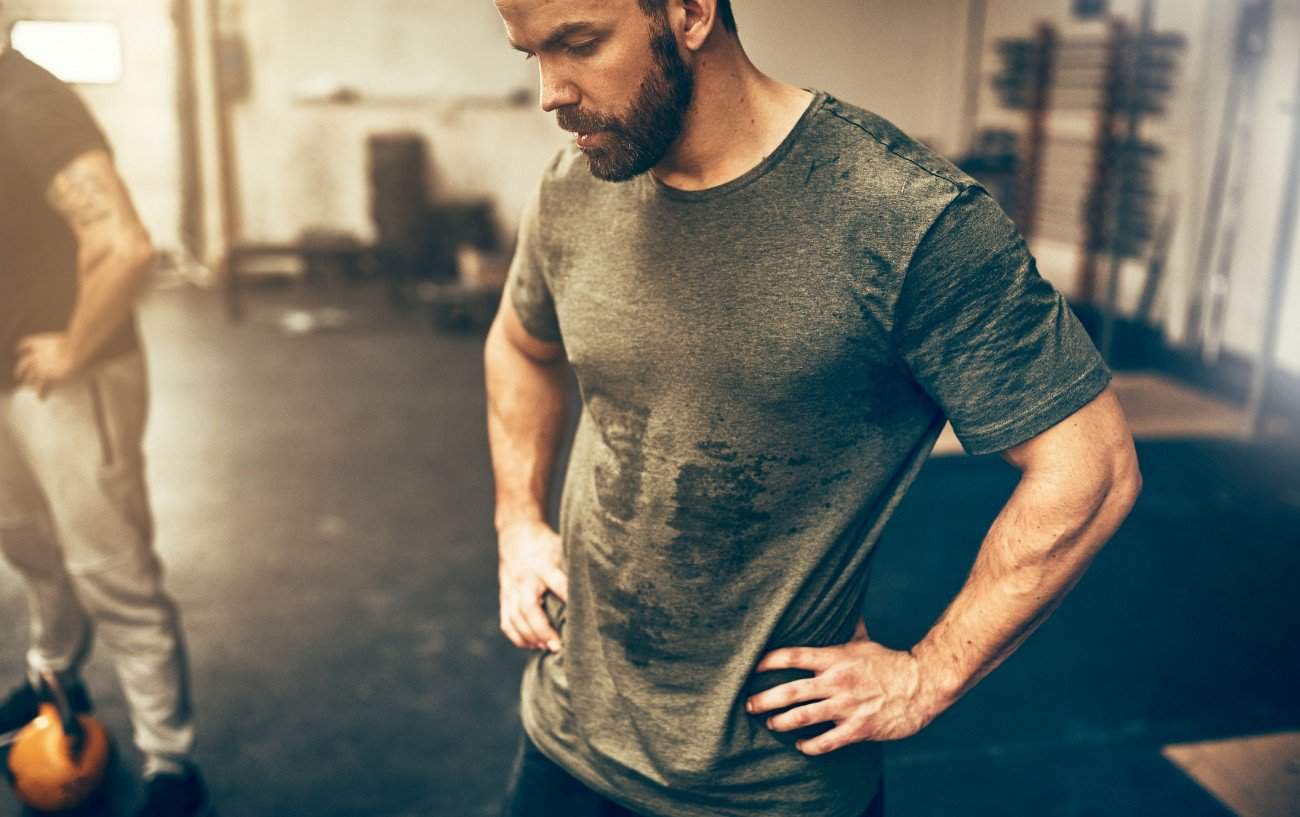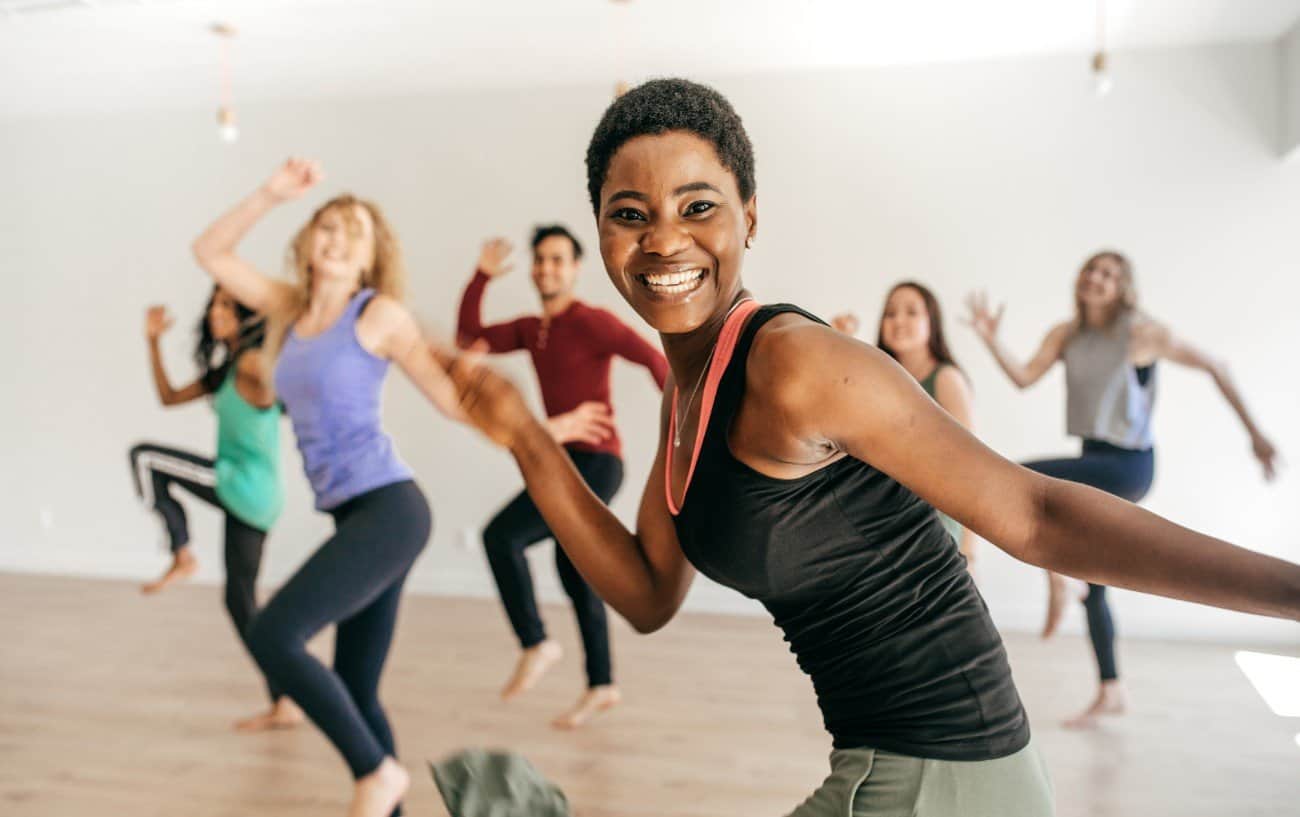Most people have had the experience of getting an ab cramp during their workout.
Perhaps you’re running, riding an exercise bike, lifting weights, or doing some other form of exercise, but either suddenly or perhaps gradually, you develop a cramp in your ab muscles.
More often than not, abdominal cramps during exercise are involuntary muscle contractions in the abdominal region caused by factors like dehydration, overexertion, poor warm-up, nutritional deficiencies, improper breathing, and fatigue.
In this article, we discuss the common causes of abs cramps while working out and tips to avoid getting cramps in your abs when exercising.
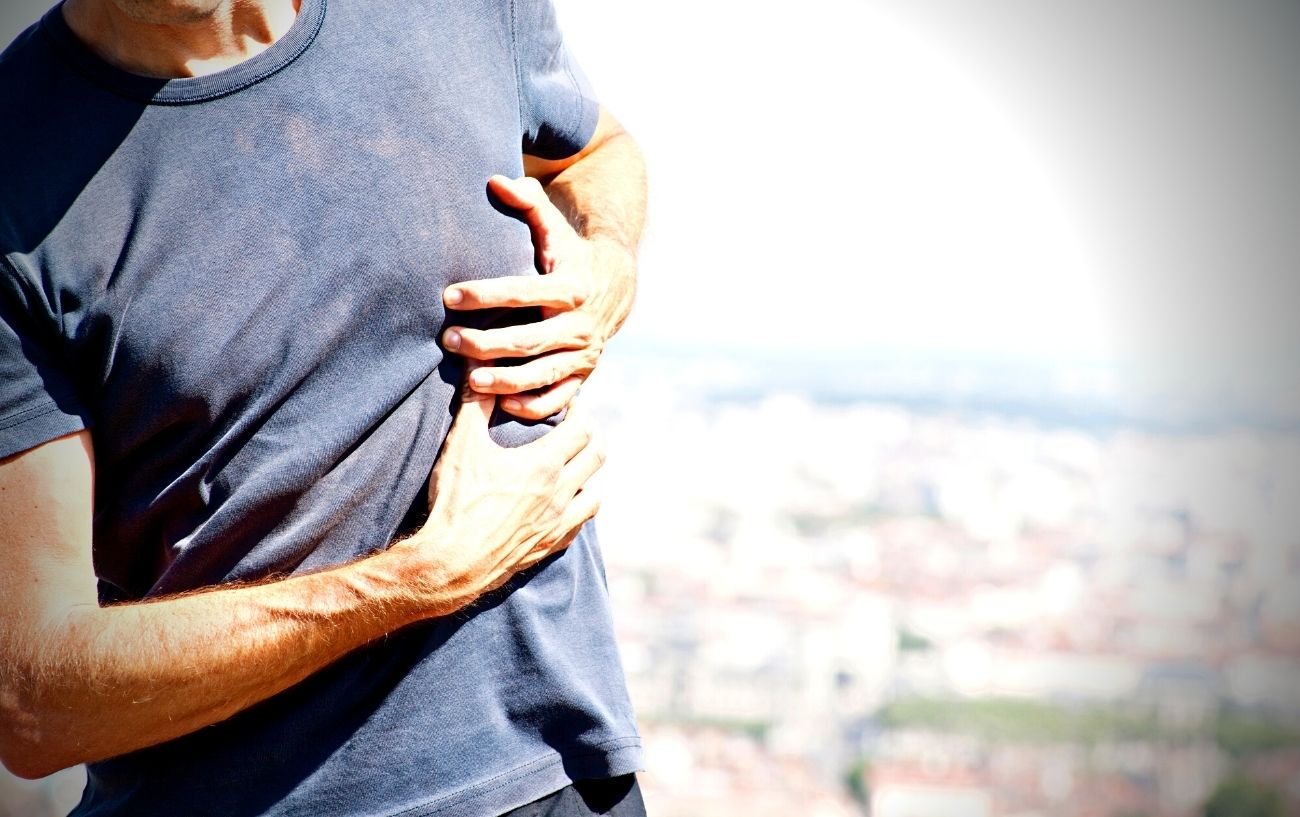
What Is An Ab Cramp?
Ab cramps, or abdominal cramps, during exercise, are also referred to as side stitches and are medically termed exercise-related transient abdominal pain (ETAP).
This type of cramp can cause extreme stomach pain and may even limit your ability to continue exercising, though in most cases, side stitches are not indicative of a major issue or a cause for concern.
Side stitches during exercise are quite common, thought to occur in up to 60% of habitual exercisers at one time or another1https://www.jsams.org/article/S1440-2440(13)00144-8/abstract.
What Causes Ab Cramps During Exercise?
Exercise itself does not cause ETAP or side stitches.
In most cases, abdominal cramps during exercise are due to increased intra-abdominal pressure, stress and strain on the diaphragm muscle, or irritation of the parietal peritoneum, which is the lining around the abdominal organs.

Other theories2Morton, D., & Callister, R. (2014). Exercise-Related Transient Abdominal Pain (ETAP). Sports Medicine, 45(1), 23–35. https://doi.org/10.1007/s40279-014-0245-zunderlying the causes of ab cramps and side stitches include:
- Ischemia or inadequate oxygen supply to the diaphragm (such as when you don’t warm up but start working out or running intensely)
- Stress on the visceral ligaments that support and attach the abdominal organs to the diaphragm
- Gastrointestinal distension or low blood flow
- Cramping of the abdominal muscles
- Aggravation of spinal nerves
However, the exact etiology is unknown, and the experience of an ab cramp or side stitch during exercise can vary from one person to the next.
Here are some of the factors that can contribute to increasing the likelihood of getting an ab cramp when working out:

#1: Working Out Too Soon After Eating
One of the most common causes of ab cramps during exercise is working out too soon after eating or eating too much before your workout.
This can cause anything from bloating and belching to side stitches and nausea.
When you exercise, blood flow is diverted away from the digestive tract to better perfuse the working muscles, heart, and lungs with oxygen-rich blood and nutrients and to help flush metabolic waste products from these tissues.
As a result, digestion essentially ceases, leaving any undigested food to sit around in your stomach and intestines. This can put extra pressure and stress on the visceral ligaments and fascia in the abdominal cavity, which can cause an ab cramp to develop.

#2: Exercising In the Heat
It is also more common to get a side stitch when running or exercising in the heat.
The body employs a thermal regulatory response in which blood flow to the skin increases significantly in order to help pull your body down.
By taking blood as far away from the core of the body as possible and bringing it to the surface of the skin, excess heat energy can be released to help decrease the body temperature.
Adding the element of heat into the equation of the physiological demands of exercising on the body further exacerbates the cessation of digestion because even less blood flow is available for the digestive tract.
Now, in addition to the oxygen demand of the muscles, heart, and lungs, more blood has to go to the skin. Therefore, the chances of getting a stomach cramp when working out when it’s hot are even higher.
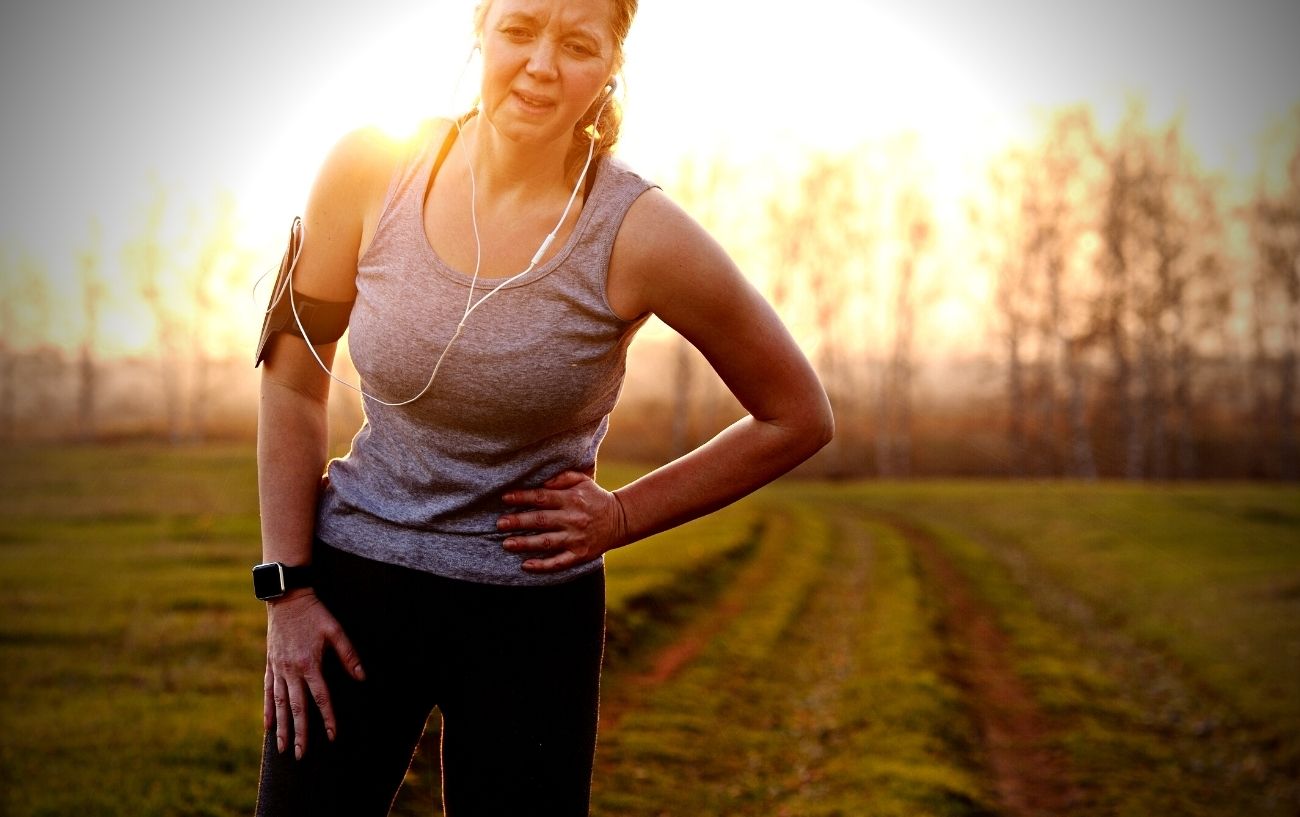
#3: Eating the Wrong Foods Before Exercise
You should avoid eating certain foods before running as well, as they can also be triggers for stitches or ab cramps during exercise.3Karhu, E., Forsgård, R. A., Alanko, L., Alfthan, H., Pussinen, P., Hämäläinen, E., & Korpela, R. (2017). Exercise and gastrointestinal symptoms: running-induced changes in intestinal permeability and markers of gastrointestinal function in asymptomatic and symptomatic runners. European Journal of Applied Physiology, 117(12), 2519–2526. https://doi.org/10.1007/s00421-017-3739-1
Common culprits include fatty foods, high-fibrous foods, and high-protein pre-workout meals and snacks.
Fat, fiber, and protein all delay gastric emptying, slowing the rate at which the contents of your stomach move onto the small intestine.
Therefore, if you have a pre-workout meal or snack that is high-fat, high-fiber, or high-protein, you will need to wait longer before exercising for that food to be digested enough that it shouldn’t cause you problems while you work out.
This is especially important for vigorous workouts like running, jump roping, plyometrics, and anything that will jostle your stomach and/or engage most of the muscles in your body.
Working out too soon after eating these foods will increase the likelihood of cramping, nausea, and vomiting after exercise because the food will still be sitting around in your stomach when your workout begins, and no digestion will take place while you are doing intense physical activity.
That same food will be stuck in your stomach when your workout ends, eager to make its reappearance by escaping your stomach and coming back up.
For example, runners often say that they throw up after running when they run too soon after eating or had eaten a particularly large meal and did not wait long enough before heading out for their workout.
You can become quite nauseous if you have partially digested or undigested food sitting around in your stomach while you are jostling your body vigorously during a workout.
The more food and liquid you have in your stomach, the greater the likelihood that you will get an abdominal cramp during exercise. You may also get excess gas buildup in your stomach and intestines, leading to flatulence, burping, and bloating.
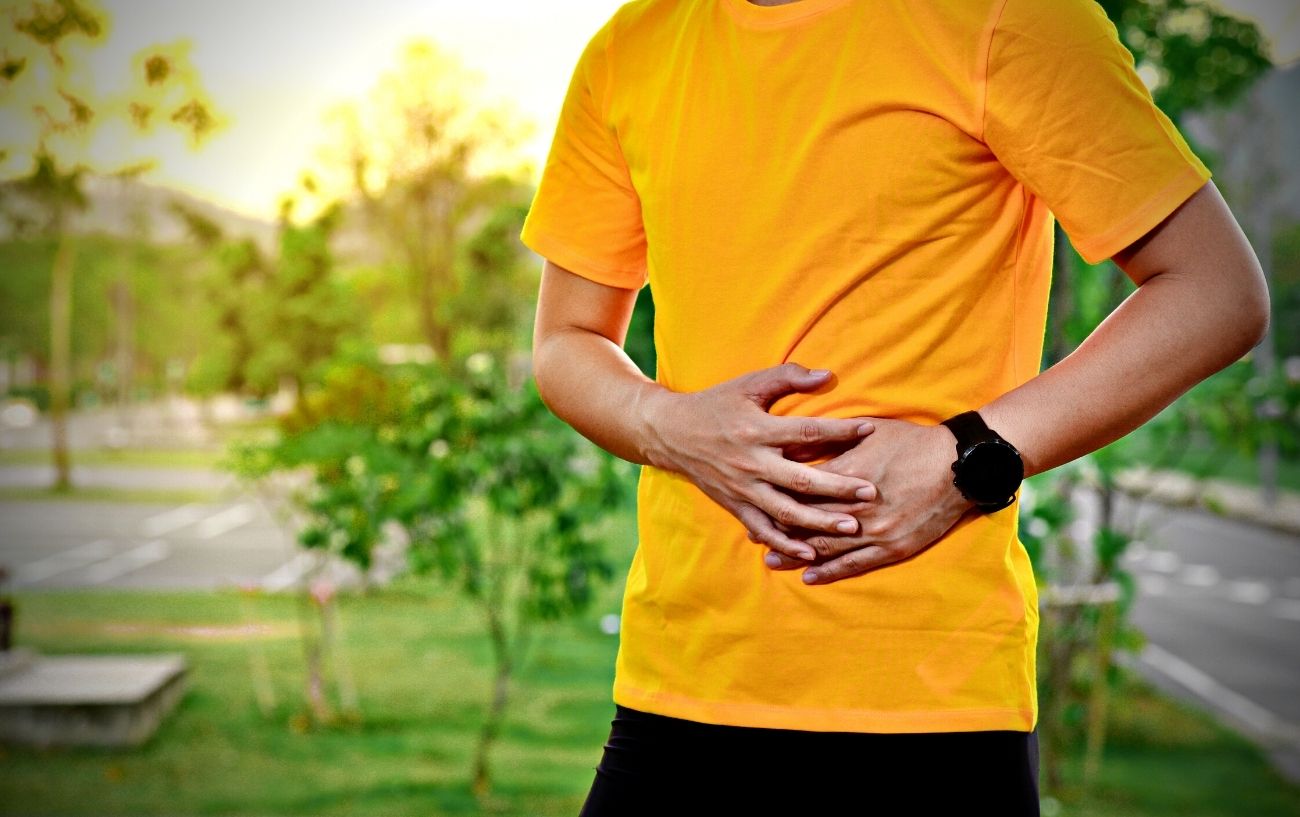
#4: Dehydration or Electrolyte Imbalances
Can dehydration lead to abdominal cramps, and how can I prevent them?
Dehydration or electrolyte imbalances have been associated with muscle cramps.
Although evidence is mixed regarding dehydration and abdominal cramps specifically, there’s reason to believe that inadequate fluids and low electrolytes may contribute to getting abs cramps during your workout.
#5: Overuse
Just like other muscles like the calves, hamstrings, and glutes, the abs can cramp up due to overuse and localized fatigue.
If you are doing a long, ab-focused workout or are a beginner taking on a lot of sit-ups, crunches, and planks, it’s possible to get an ab cramp during your core routine.
#6: Weak Core Muscles
Weak abdominal and core muscles may increase the likelihood of getting ab cramps because your core muscles are involved in almost every type of exercise, even if you aren’t doing ab-focused exercises.
If your abs are weak, the motor units can stop firing well due to fatigue, leaving some muscle fibers in a contracted state, and causing an ab cramp.
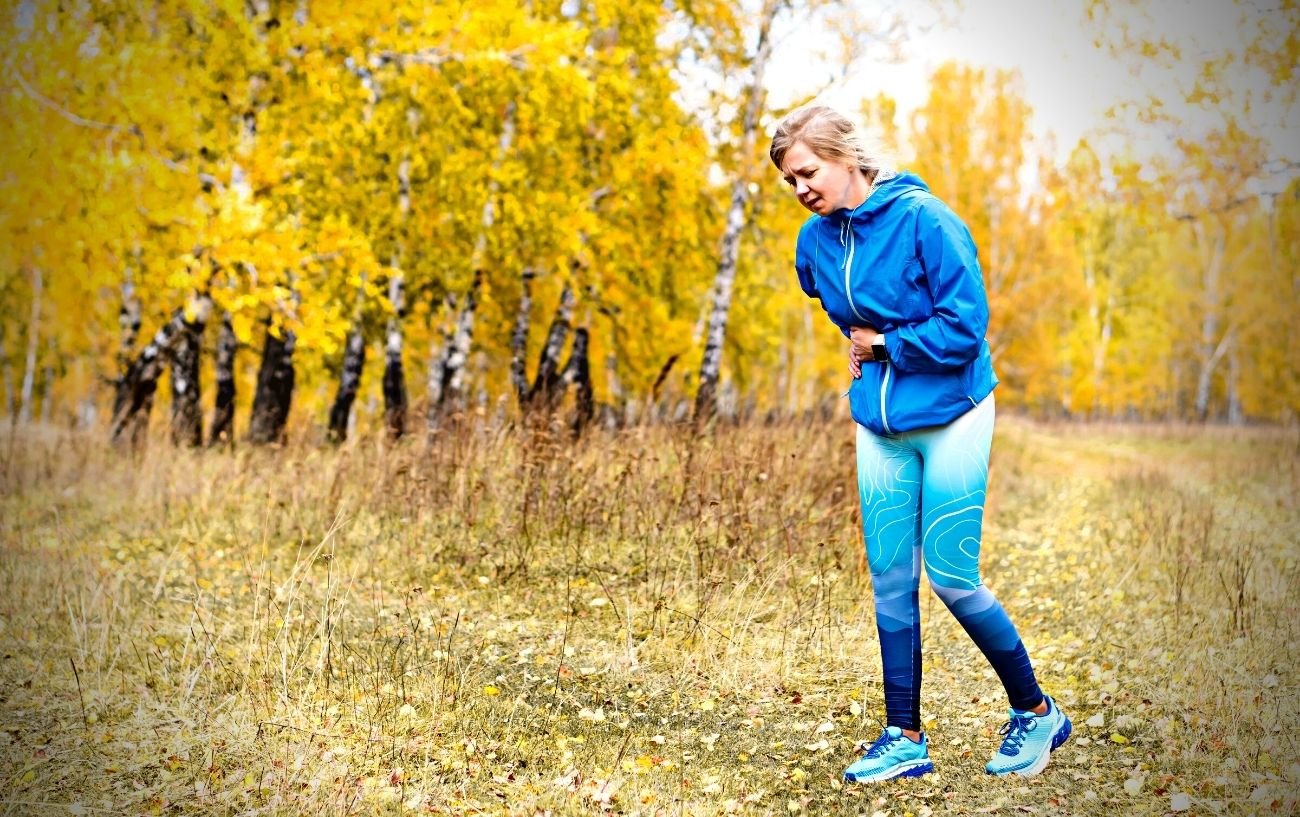
#7: Consuming Sugary Foods or Beverages Before You Exercise
having a carbohydrate-rich, pre-workout snack can help top off your glycogen stores and give you the energy you need for an endurance workout or high-intensity strength training session.
But, there’s evidence to suggest that sugary beverages and high-carbohydrate foods may increase the risk of side stitches during exercise.4Morton, D., & Callister, R. (2014). Exercise-Related Transient Abdominal Pain (ETAP). Sports Medicine, 45(1), 23–35. https://doi.org/10.1007/s40279-014-0245-z
How To Avoid Ab Cramps During Exercise
So, how do you make an ab cramp go away? Here are some tips to prevent ab cramps during workouts:
Tips To Avoid Cramp:
- Drink plenty of water, but don’t consume too much fluid at once during your workout. Try to sip slowly and at regular intervals.
- Wait long enough after eating to hit the gym. Plan to wait about 3-4 hours to work out after eating a large meal, 2-3 hours for a small meal, and 1-2 hours after most snacks unless it’s a very small snack consisting of only simple carbohydrates or a low-intensity workout like walking or yoga.
- Avoid eating fatty foods, fibrous foods, artificial sweeteners, carbonated beverages, and excessive caffeine before you work out.
- Warm up before your workouts rather than jumping in right away.
- Gradually build up the duration and intensity of your ab workouts, but do spend time strengthening your core muscles so that your abs can handle the demands of your workout routine without fatiguing and cramping up.
- Supplements and sports drinks that include potassium, calcium, and magnesium may help prevent ab and leg cramps.
- Breathe slowly and evenly throughout your workout, trying to avoid shallow breathing or uneven heaving.
How can I tell if my abdominal pain is a muscle cramp or something more serious?
Overall, although ab cramps are painful and are a common occurrence, they are rarely serious. With that said, prevention is ideal, so examine your fueling strategy and other contributing factors and see if you can troubleshoot the issue.
If an ab cramp turns into severe pain or won’t go away, seek medical attention or contact your health care provider.5Muscle cramps: MedlinePlus Medical Encyclopedia. (n.d.). Medlineplus.gov. https://medlineplus.gov/ency/article/003193.htm
Other possible causes, such as ulcerative colitis, gastroenteritis, inflammatory bowel disease (irritable bowel syndrome), and appendicitis, should be taken seriously.
For some great core exercises to get started strengthening, check out our guide to the best core exercises.



